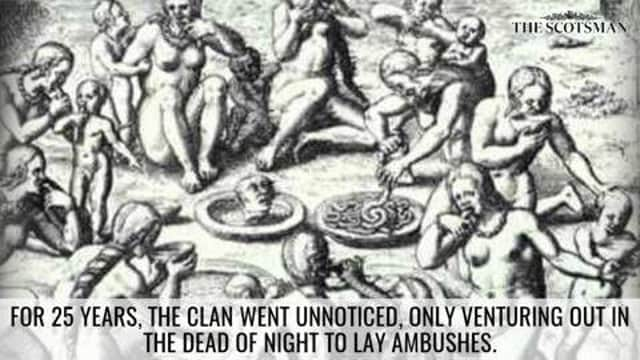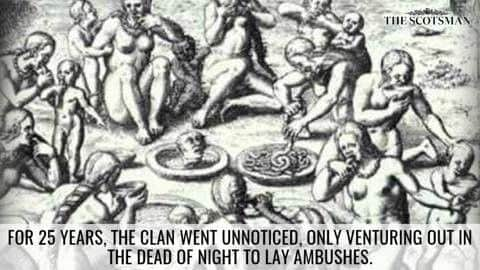Video: the gruesome story of Scots cannibal Sawney Bean


Folklore doesn’t come more gristly than the tale of the 16th Century cave-dwelling clan, led by sadistic cannibal Sawney Bean.
Before adopting his alter-ego, Alexander Bean was born in East Lothian. His father was an honest labourer who made a living from ditch digging and hedge cutting. With little taste for an honest day’s work, he refused to follow in his father’s footsteps and left home, accompanied by a maniacal woman, who would later become known as ‘Black Agnes’.
Advertisement
Hide AdAdvertisement
Hide AdTogether, they travelled to the West Coast of Scotland and set up home in a coastal cave at Bennane Head, situated off the beaten track between Girvan and Ballantrae.


They survived by robbing lone travellers and small parties, but their bloodlust soon led to them killing and devouring their victims.
The cave of legend is still there today - 200ft deep and with an entrance fully submerged by the high tide.
For 25 years in the seclusion of his coastal hideaway, Sawney Bean fathered eight sons and six daughters, who were later joined by 18 grandsons and 14 granddaughters by incest.
Advertisement
Hide AdAdvertisement
Hide AdIn that time it’s estimated 1000 victims were murdered and eaten by the Beans. The rising number of missing persons didn’t go unnoticed by the local villagers, but still the twisted family remained hidden in their cave by day, only venturing out under nightfall to secure their next meal.


One night, the Bean horde attacked a young married couple returning from a fair on a single horse. They had not foreseen his skill in combat and with pistol and sword, made his stand.
His wife was murdered before his very eyes, but before the clan could commit him to the same fate, a swelling group of travellers returning from the same fair interrupted the ambush and the clan fled into the night.
The grieving husband’s account of that night and the scene of the horrific roadside murder was enough for an incensed King James VI to lead 400 men to disperse with the monstrous pack.
Advertisement
Hide AdAdvertisement
Hide AdThey had almost given up their search when dogs followed a scent to the coastal cave and armed soldiers wasted no time charging in.
The family was captured alive and sent to Tolbooth Jail in Edinburgh and underwent horrific medieval executions without trial.
The men had their hands and feet severed and allowed to bleed out. The women were made to watch, before being burned at the stake.
You would think that would be the end of the Bean clan, but there was one more grisly twist to the tale.
Advertisement
Hide AdAdvertisement
Hide AdLegend tells of one of Bean’s daughters got up the courage to leave the cave and settled down in Girvan. It’s said she planted a dule tree, which later became known as ‘The Hairy Tree’.
Following her family’s capture, locals uncovered her true identity and she was hung without mercy from the bough of the very tree she planted.
Naturally, there are varying degrees of speculation about the legitimacy of the legend of Sawney Bean and his cannibal brood.
Advertisement
Hide AdAdvertisement
Hide AdIt was once suggested that it was English propaganda manufactured to paint Scots as savages during a time of great political unrest. Despite no mention in newspapers of missing persons during the time the cannibal clan were supposedly active, there are potentially some kernels of truth in the tale.
In his 2005 article, author Sean Thomas wrote: “It is arguable that the Bean story may have a basis of truth but the precise dating of events has become obscured over the years.
“Perhaps the dating of the murders was brought forward by the editors and writer of the broadsheets, so as to make the story appear more relevant to the readership”
“To add to the intrigue, we do know that cannibalism was not unknown in mediaeval Scotland and that Galloway was in medieval times a very lawless place; perhaps nothing on the scale of the Bean legend took place, but every story grows and is embroidered over time.”
Regardless of the legend’s authenticity, it’s a welcome change from kelpies, unicorns and the Loch Ness monster, albeit a particularly gruesome one.